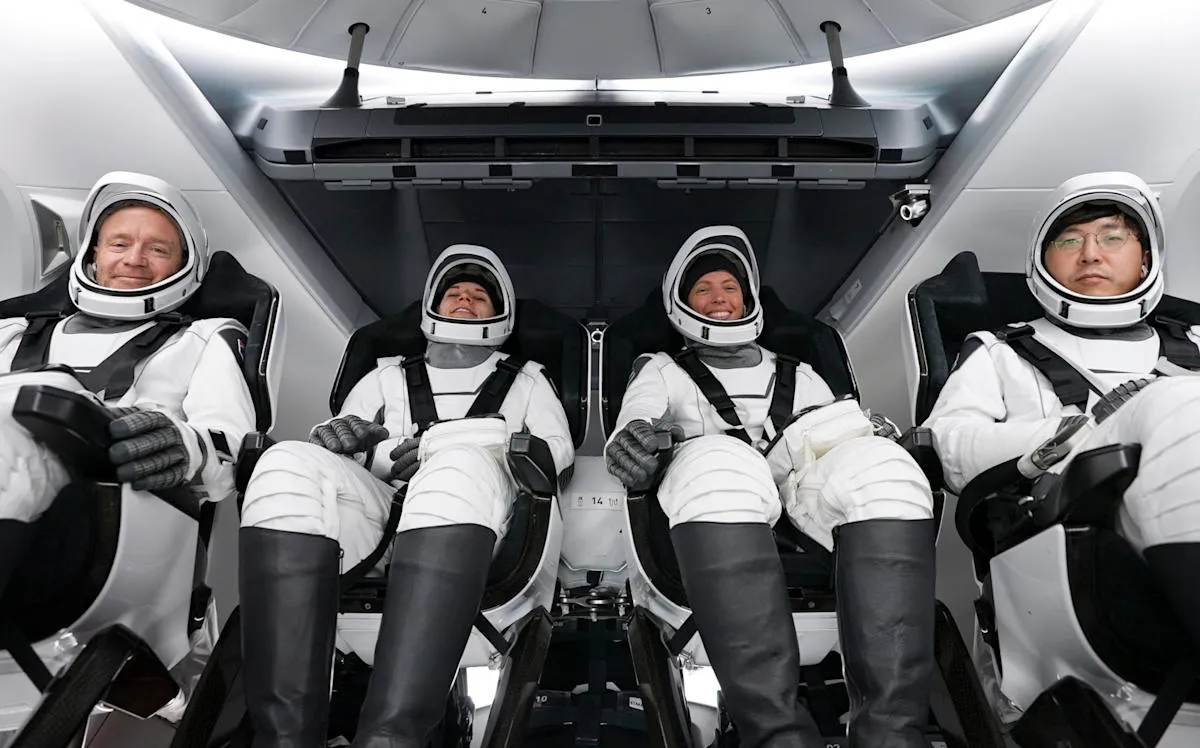
On March 31 at 9:46 PM Eastern Time, SpaceX achieved a remarkable milestone by launching the Fram2 private crewed mission aboard a Falcon 9 rocket. This groundbreaking mission marks the first human spaceflight dedicated to exploring the Earth's polar regions, areas that are typically out of view for astronauts on the International Space Station.
During the Fram2 mission, the crew will use a panoramic cupola attachment to observe the Earth's poles from an altitude of 430 km (267 miles). The SpaceX Crew Dragon capsule is capable of traveling from the North Pole to the South Pole in just 46 minutes. The mission duration is set to last between three to five days, providing scientists with a wealth of footage that captures the unique and stunning features of the polar regions.
In an exciting development, SpaceX has already shared the mission's initial views of the Earth's poles from space. The crew is expected to observe fascinating light emissions that resemble auroras, including rare phenomena known as STEVEs, characterized by purple and green light ribbons illuminating the night sky.
The Fram2 crew will conduct a total of 22 scientific experiments aimed at enhancing our understanding of human health in space. These studies are particularly vital for the planning of long-duration missions in the future. Among the experiments, the crew will capture the first human X-rays in space, analyze exercises designed to maintain muscle and bone mass, and explore sleep and stress patterns through wearable technology. Additionally, they will monitor glucose levels and examine hormonal health in female crew members.
In a unique twist, the crew will not receive the typical medical and mobility assistance upon landing, allowing researchers to observe how they re-acclimate to Earth's gravity independently. An MRI will be performed immediately after their return to monitor any physiological changes experienced during the mission.
NASA has hailed the launch of Fram2 as a significant advancement in humanity's quest to understand how our bodies will adapt to the challenges of living in outer space. This mission is expected to yield crucial insights that will inform future space exploration efforts.
The mission features a diverse crew including Chun Wang, a Chinese-born cryptocurrency investor now residing in Norway, who sponsored the trip. Jannicke Mikkelsen, a filmmaker specializing in technology for films shot in remote and hazardous environments, serves as the vehicle commander. Rabea Rogge, a robotics researcher from Norway, is the pilot, while Eric Philips, a seasoned polar adventurer and guide, takes on the role of medical officer.
As the Fram2 mission unfolds, it promises to contribute significantly to our understanding of human physiology in space and opens up new possibilities for exploration in previously uncharted territories of our planet.